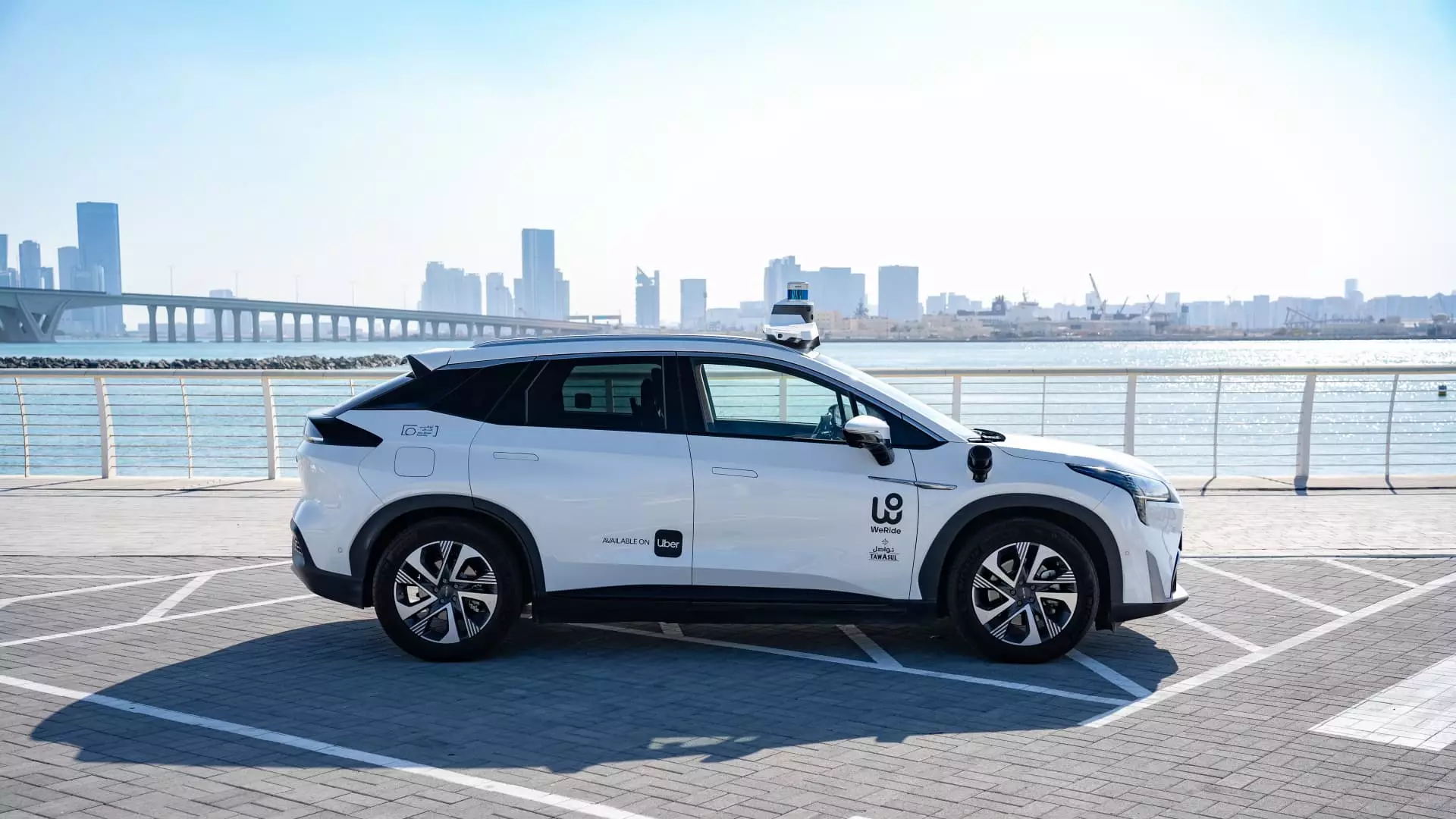In a significant move to enhance its transportation offerings, Uber has forged a partnership with WeRide, a prominent autonomous vehicle developer from China. This collaboration aims to introduce autonomous vehicle rides in Abu Dhabi, marking a milestone in the ride-hailing giant’s expansion into the realm of self-driving technology. This announcement was made public on a Friday, with plans for an initial rollout that includes a human driver in each robotaxi to oversee safety. This precaution, while essential, raises questions about the pace at which Uber and WeRide are approaching a fully autonomous service. The planned launch of a completely driverless service aimed for 2025 indicates a bold timeline that may highlight the innovative ambition of both companies.
The robotaxi service is set to operate along coveted routes, connecting Saadiyat Island and Yas Island, and extending to Zayed International Airport. These locations are not merely arbitrary but significant tourist and business hubs, suggesting that the service targets both local residents and international visitors. While the inclusion of a human driver offers immediate reassurance regarding safety and reliability, it remains to be seen how public perception will evolve as the technology matures. For the foreseeable future, Uber’s initiative in Abu Dhabi reflects a cautious yet calculated entry into the autonomous vehicle sector.
WeRide, publicly listed on Nasdaq, is notable not only for its partnership with Uber but for its extensive operational testing capabilities across various global markets, including Dubai, China, Singapore, and the United States. This breadth of experience positions WeRide as a leader in autonomous technology, which Uber will likely leverage to enhance its own services. The global footprint of WeRide underscores the competitive landscape in which both companies must operate, particularly as they face challenges from giants like Waymo, owned by Alphabet. The stakes are high, and success in this venture could significantly influence both firms‘ futures in the fast-evolving transportation ecosystem.
Uber CEO Dara Khosrowshahi has publicly stated that the company has established relationships with over a dozen autonomous vehicle companies, suggesting a robust strategy for integrating autonomous technology into its platform. However, analysts like James Cordwell have flagged potential risks; the introduction of self-driving vehicles might disrupt Uber’s core mobility business. While Cordwell acknowledges that autonomy could expand Uber’s market reach, he warns that competitors like Waymo could pose substantial threats in the U.S. market. This duality of market potential and risk illustrates the complex dynamics that Uber will navigate as it rolls out its autonomous vehicle services.
Uber’s partnership with WeRide sets the stage for a transformative chapter in the ride-hailing service’s offerings, but the road ahead is fraught with both opportunity and challenge. The next few years will be crucial in determining how autonomous vehicles reshape not only Uber’s business model but the transportation landscape as a whole.


Napsat komentář